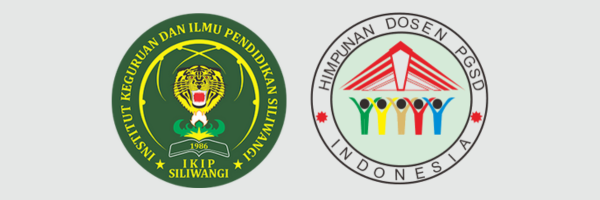IMPROVING THE ABILITY OF PRIVATE SCHOOL TEACHERS IN MAKING SCIENTIFIC WRITING THROUGH STRUCTURED ASSISTANCE
DOI:
https://doi.org/10.22460/pej.v2i2.1062Abstract
In this study the problem arises because of several things as follows: 1). The limited ability of prospective elementary school students to make scientific papers; 2). The limitation of lecturers in processing learning subjects is the technique of writing scientific papers as teaching material. These limitations are feared to cause stagnation in the ability of prospective primary school teachers to make scientific papers. Mentoring is a way to overcome problems that can be caused by reduced availability, support, and guidance of lecturers as adults in the lives of many students. The results of this study are that there is an increase in the ability of prospective elementary school students to make scientific papers with structured mentoring. By implementing structured mentoring in the Scientific Writing Technique course, prospective elementary school teacher students are guided to make scientific papers in a structured manner. The quality of scientific papers made by students of prospective elementary school teachers using structured assistance is quite good. This is because students are structured guided to write scientific papers ranging from finding problems to finding solutions and putting them in scientific papers.
References
Caldarella, P., Adams, M. B., Valentine, S., & Young, K. R. (2009). Evaluation of a mentoring program for elementary school students at risk for emotional and behavioral disorders. New Horizons in Education, 57(1), 1-16.
Clary, E. G., & Snyder, M. (1999). The motivations to volunteer: Theoretical and practical considerations. Current Directions in Psychological Science, 8(5), 156-159.
Clary, E. G., Snyder, M., Ridge, R. D., Copeland, J., Stukas, A. A., Haugen, J., & Miene, P. (1998). Understanding and assessing the motivations of volunteers: A functional approach. Journal of Personality and Social Psychology, 74(6), 1516-1530.
Dappen, L. D., & Isernhagen, J. C. (2005). Developing a student mentoring program: Building connections for at-risk students. Preventing School Failure, 49(3), 21-25.
DuBois, D. L., Holloway, B. E., Valentine, J. C., & Cooper, H. (2002). Effectiveness of mentoring programs for youth: A meta-analytic review. American Journal of Community Psychology, 30(2), 157-197.
DuBois, D. L., Neville, H. A., Parra, G. R., & Pugh-Lilly, A. O. (2002). Testing a new model of mentoring. New Directions for Youth Development, 93, 21-57.
Ellis, S. W., & Granville, G. (1999). Intergenerational solidarity: Bridging the gap through mentoring programmes. Mentoring & Tutoring: Partnership in Learning, 7(3), 181.
Evans, T. (2005). How does mentoring a disadvantaged young person impact on the mentor? International Journal of Evidence Based Coaching and Mentoring, 3(2), 1729.
Fresko, B., & Wertheim, C. (2006). Learning by mentoring: Prospective teachers as mentors to children at risk. Mentoring & Tutoring: Partnership in Learning, 14(2), 149-161.
Gilles, C., & Wilson, J. (2004). Receiving as well as giving: Mentors' perceptions of their professional development in one teacher induction program. Mentoring & Tutoring: Partnership in Learning, 12(1), 87-106.
Hancock, K. (2003). The case for in-school mentoring. Education Canada, 43(1), 24-25.
Haryanto, A.G. (2000). Metode Penulisan dan Penyajian Karya Ilmiah Buku Ajar Untuk Mahsiawa. Penerbir Buku Kedokteran EGC: Jakarta.
Herrera, C. (1999). School-based mentoring: A first look into its potential. Philadelphia: Public/Private Ventures.
Herrera, C., Sipe, C. L., McClanahan, W. S., Arbreton, A. J. A., & Pepper, S. K. (2000). Mentoring school age children: Relationship development in community-based and school-based programs. Philadelphia: Public/Private Ventures.
Jekielek, S., Moore, K. A., & Hair, E. C. (2002). Mentoring programs and youth development: A synthesis. Washington, DC: Child Trends.
Kafai, Y. B., Desai, S., Peppler, K. A., Chiu, G. M., & Moya, J. (2008). Mentoring partnerships in a community technology centre: A constructionist approach for fostering equitable service learning. Mentoring & Tutoring: Partnership in Learning, 16(2), 191-204.
Karcher, M. (2009). Increases in academic connectedness and self-esteem among high school students who serve as cross-age peer mentors. Professional School Counseling, 12(4), 292-299.
National Association for the Education of Young Children. (2008). Overview of the NAEYC Early Childhood Program Standards. Washington, DC: Author.
Rhodes, J. E. (2005). A theoretical model of youth mentoring. In D. L. DuBois & M. J. Karcher (Eds.), Handbook of youth mentoring (pp. 30-43). Thousand Oaks, CA: Sage Publications, Inc.
Rhodes, J., Reddy, R., Roffman, J., & Grossman, J. B. (2005). Promoting successful youth mentoring relationships: A preliminary screening questionnaire. The Journal of Primary Prevention, 26(2), 147-167.
Walker, H. M., & Severson, H. H. (1992). Systematic Screening for Behavior Disorders (SSBD): User’s guide and administration manual. Longmont, CO: Sopris West.
Zaenal. (1998). Evaluasi Instruksional Prinsip-Teknik-Prosedur. Bandung: Remadja Karya.












